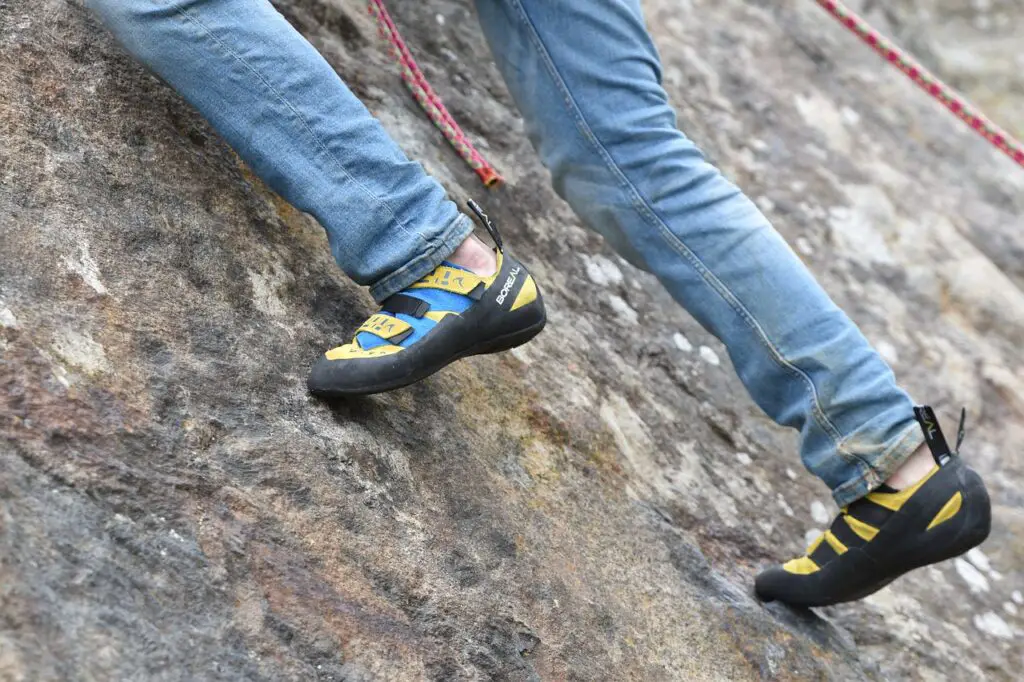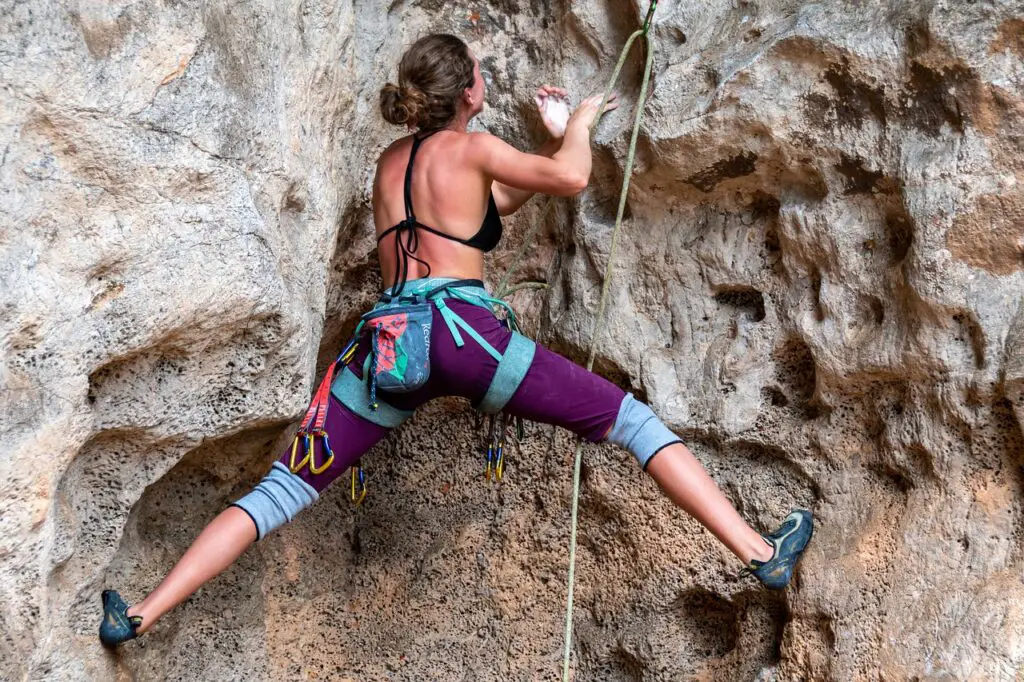Climbing shoes are an essential piece of gear for any serious climber. They help to provide the precision, support, and grip needed to navigate even the most challenging routes and routes.
However, like all gear, they will eventually wear out, and it’s important to know when to replace them. This is your guide on how long climbing shoes last and what factors can affect their lifespan.

Climbing Shoe Lifespan:
There are several factors that can affect how long a pair of climbing shoes will last. Some of these include:
- Frequency of use: The more often you climb, the more quickly your shoes will wear out. If you’re climbing several times a week, your shoes will likely need to be replaced more frequently than if you’re only climbing once a month.
- Type of climbing: Different types of climbing can put different amounts of wear and tear on your shoes. For example, trad climbing, where you place your own gear, is typically gentler on shoes than sport climbing, where you clip pre-placed bolts.
- Quality of the shoes: Higher-quality shoes are often made with more durable materials and construction, which can help them last longer. On the other hand, lower-quality shoes are more likely to wear out quickly.
- Fit and break-in period: A well-fitting shoe that is properly broken in will last longer than a shoe that is too tight or one that hasn’t been broken in.

When to Replace Climbing Shoes
While the climbing shoe lifespan can vary depending on the factors listed above, most shoes will need to be replaced after about 6-12 months of regular use. However, you should also look out for the following signs that it’s time to replace your shoes:
- The sole is worn down: The rubber on the sole of your shoe is what provides the grip and traction needed for climbing, so a worn-down sole means you’ll have less grip and stability.
- The rand is worn down: The rand is the rubber that wraps around the toe and sides of the shoe, and it helps to protect the shoe from wear and tear. If the rand is worn down, it’s a sign that the shoe has been overused.
- The shoe is no longer snug: A snug fit is important, so if your shoes are feeling loose or your foot is slipping around inside, it’s time to replace them.
- The shoe is stretched out: The climbing shoe uppers are made to stretch, which helps them to mold to the shape of your foot. But if the shoes are stretched out, they will no longer provide the support and precision needed for climbing.
Proper Care for Climbing Shoes
Taking good care of your shoes can help to extend their lifespan. Here are some tips for properly caring for your shoes:
- Clean them after each use: Use a damp cloth or brush to remove dirt, chalk, and other debris from the shoes.
- Dry them out: If the shoes are wet or damp, stuff them with newspaper and let them dry out in a well-ventilated area.
- Store them properly: Keep your shoes in a cool, dry place out of direct sunlight. Don’t store them in a damp area, or near chemicals or other materials that can damage the rubber.
Climbing shoes are an important piece of gear for any climber, but they do wear out over time. Their lifespan can vary depending on factors such as frequency of use, type of climbing, and quality of the shoes.
